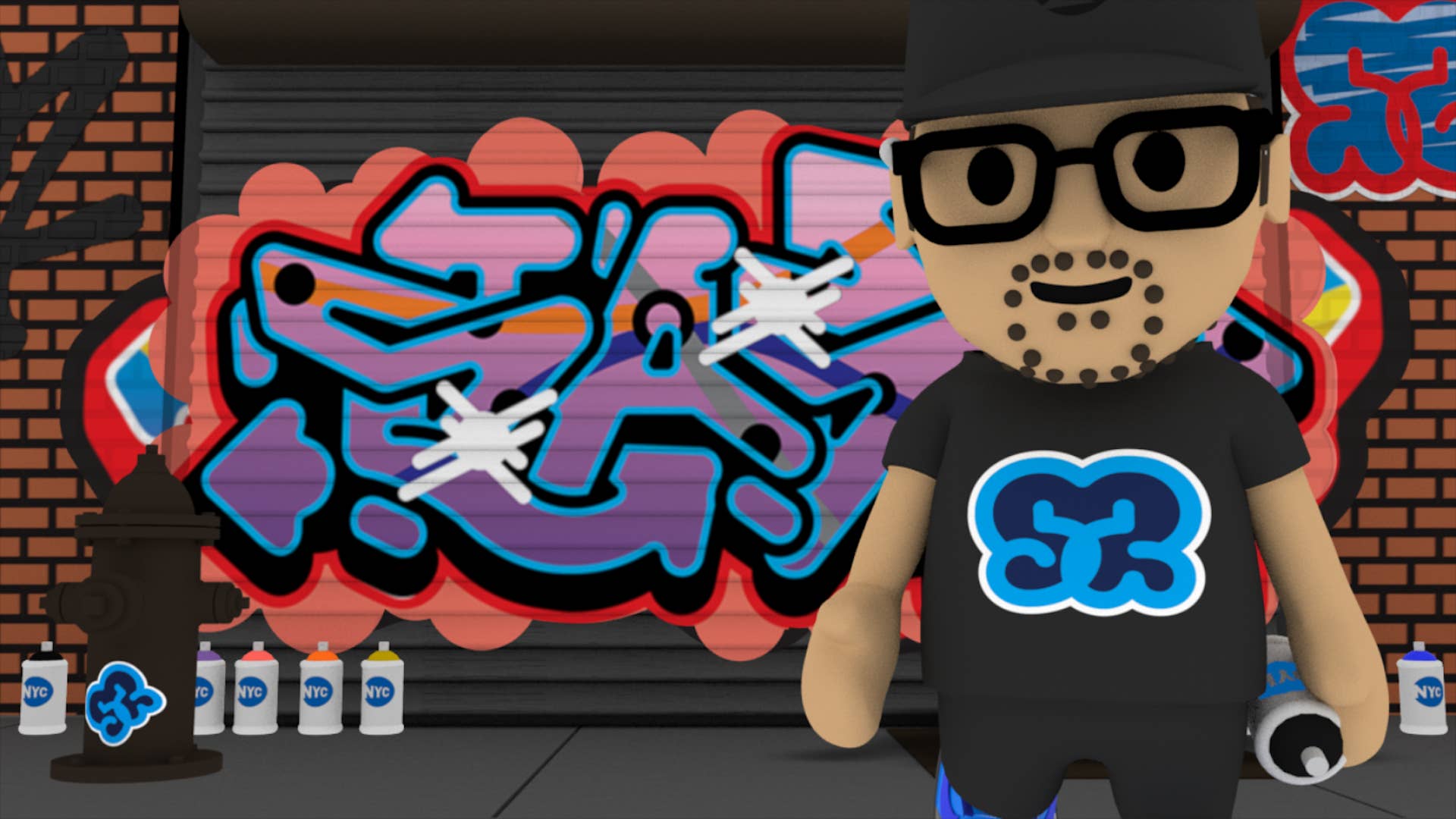
When the graffiti artist Josh “Stash” Franklin first started screenprinting his own T-shirts in 1985, he wasn’t necessarily envisioning a “streetwear brand.” Instead, he was looking to service folks within the graffiti community by selling them T-shirts emblazoned with the logos of popular spray paint brands. An artist who exhibited his work alongside subway graffiti writers like Zephyr and pop artists like Jean-Michel Basquiat, T-shirts were just another vessel for Stash’s art. But his graphic T-shirts went viral and were worn by musicians like Mick Jones of The Clash and members of the Beastie Boys in the early ‘90s. Many vintage streetwear aficionados are familiar with Stash, Futura and Gerb’s famous 1992 “Phillies Blunts” T-shirt, an item which is frequently cited to be one of the first popular pieces of streetwear because of how much it got bootlegged after its release. However, his 1993 graffiti-inspired brand Subware, which was co-signed early on by Fragment Design’s Hiroshi Fujiwara and Errolson Hugh of Acronym, eclipsed the lore of that single T-shirt.
“If people really look at what Subware was, it was a celebration of other artists. I just knew a bunch of really amazing artists that I would love to have a T-shirt from,” says Stash. “I wanted a Futura T-shirt but there was none. I wanted a Zephyr T-shirt, but you couldn’t get one. So I was selfishly indulging with a group of my friends, but broadcasting and really promoting the [graffiti] movement. I was educating and reaching audiences that hadn’t been reached with the artwork before.”
Years before Kaws and Futura collaborated with luxury brands like Louis Vuitton, Dior, and Comme des Garçons, they collaborated with Subware. Stash’s pioneering New York City streetwear brand was akin to other graffiti-inspired clothing labels of the time, such as PNB Nation, Conart, and Tribal Gear. But Subware’s early impact on the genre of streetwear was monumental. It was one of the first brands to architect fashion-art collaborations as we know them today while also tightening streetwear’s ties to “techwear” through early collaborations with brands like Acronym. Although Subware faded out in the late 2000s along with Stash’s brick and mortar store Recon/Nort, he recently relaunched his line through a marquee collaboration with Mankey—the Japanese graphic artist behind A Bathing Ape’s famous “Baby Milo” characters.
We spoke to Stash about the origins and impact of Subware, early ‘90s New York City streetwear, his collaboration with Supreme this season, and more.
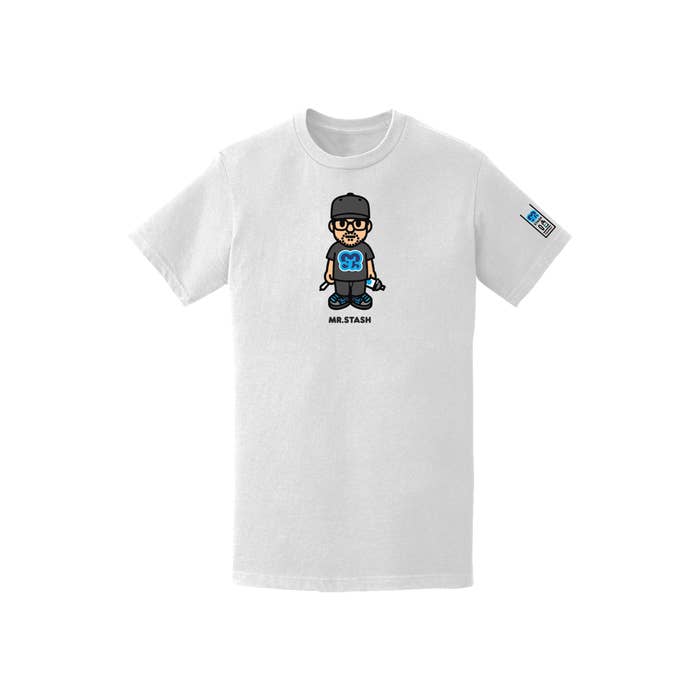
Subware is one of the OG NYC streetwear brands, why did it feel right to launch it now?
I guess it just came back around and I just had the inclination to revisit some things. Now looking at the current landscape, I just saw a little window of opportunity. Nostalgia of where we came from comes around ever so often.
If people really look at what Subware was, it was a celebration of other artists. Because everything was so-and-so for Subware. Zephyr for Subware. Kaws for Subware. Futura for Subware. It wasn’t so much for myself broadcasting my own work, but a celebration of where we all came from. At the time, a lot of those artists didn’t have their own merchandise. They didn’t have their sea legs, if you will, in the schwag arena. But we weren’t making schwag, we were elevated as little clothing labels. And so we were incorporating our friends and family just because the audience needed it. And we were educating people by introducing them to these artists.
It’s crazy to think that you and Futura were the first artists to exhibit in the BAPE gallery in the ‘90s. Brands like Subware and other projects you worked on around that same time were highly influential in Japan. Why do you think designers like NIGO® and Jun Takahashi loved Subware?
I know they were very influenced by what we did. I worked on a lot of “ghost” graphics back then—graphics that didn’t have my name attached to it. I did the artwork for MC Serch’s album and from there I created a graphic language that carried over to Subware. But that Undercover “U” with the dash under it. That’s the same idea I did with my Subware “S” and putting a line under it. Jun talks about it freely and he’s very honest about my influence, my graphic language, and how it appealed to him at the time. We actually interviewed him for my book and he talks about that
As for NIGO®, I don’t really know so much. I know he was just very influenced by what we did. Obviously he incorporated me and brought me into BAPE at a very early stage. It was really interesting. They knew way more about my history than I knew about theirs at the time. By the time I made my way over to Japan they were really educated and really up on everything.
I love those cans you did for BAPE back in the day.
We got invited to work with NIGO® on a lot of projects very early. We’re talking like 1997. And one of the projects was that he wanted to open up two stores so he asked me if I had any ideas. I said: “Yeah ‘Concept Versus Technique.’” I was using that motif in Subware. I had two early characters that I had Lenny (Futura) draw me. One was called “Concept” and another was called “Technique.” Some people have the concepts while some people have the techniques. Somebody could be really skilled with a spray paint can but they don’t have any good ideas.
So that was sort of like the idea of what we battled as both artists and young entrepreneurs. So I had the idea to share it with NIGO® and there were two stores. There was “Concept”—and we did this before Concepts opened in Boston—and Technique. Concept had the spray cans you just mentioned. Real official spray cans, but with a false bottom that hid shrunk wrapped T-shirts inside. That store also had a whole host of other amazing things that everybody knows Bathing Ape and NIGO®’s mind for. Then there was “Technique” a floor below, which was like skateboarding and BMX-themed. I introduced Brooklyn Machine Works, Joe Avedisian is a very good friend of ours, to NIGO®. And we worked on a whole Bathing Ape x Brooklyn Machine Works bicycle project together that they sold strictly in the Technique store. That was the origin of that collaboration.
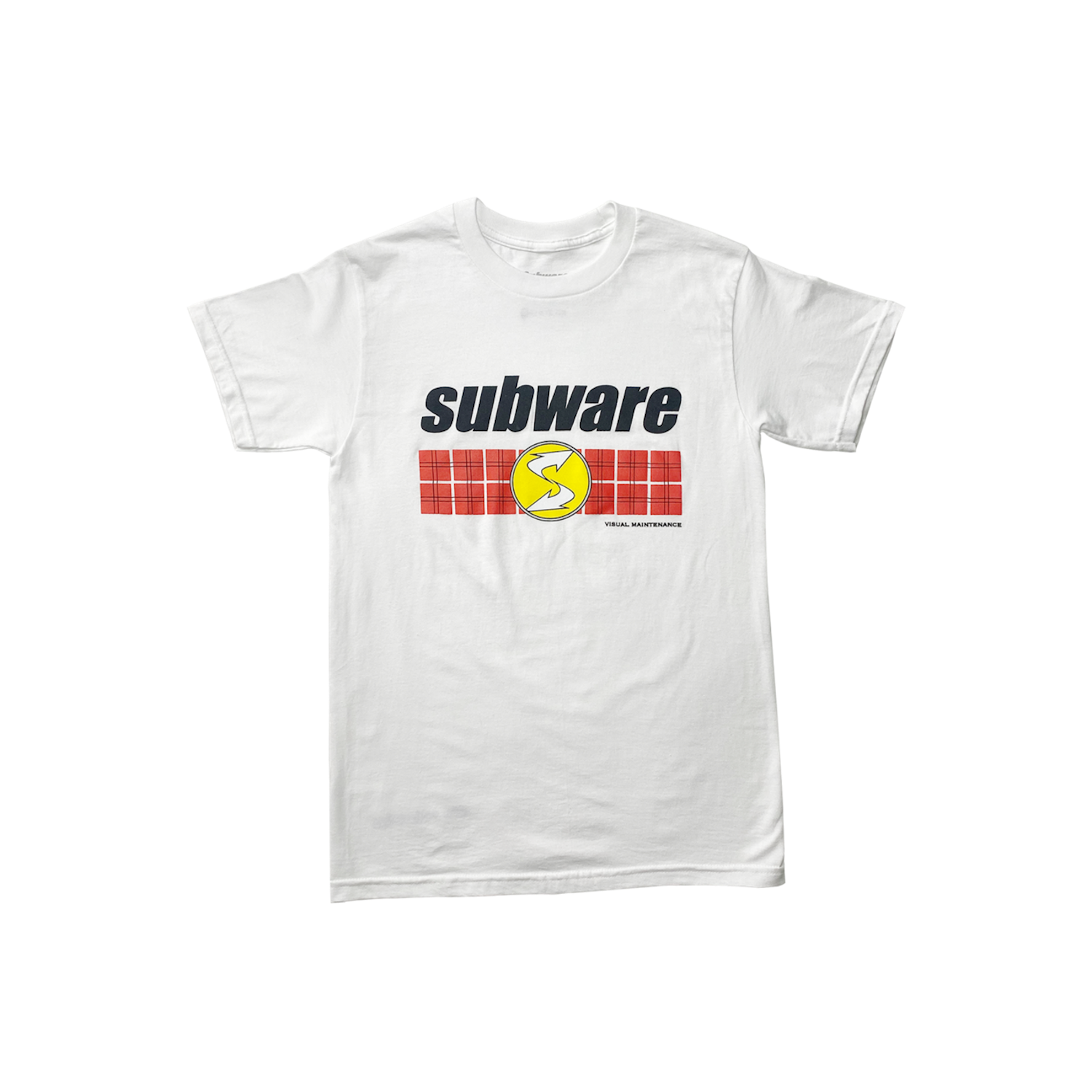
How did you start making T-shirts?
GFS (Gerb Futura Stash) was the first idea, right? I started making Krylon and Rust-oleum T-shirts in 1985. And again, I made them for me and all the graffiti dudes that I was friends with at the time. We just happened to be like, this amazing group of guys. And you know, it wasn’t until a few years later when Futura and I were going to Europe together to art shows, when we talked about bringing product. He was very acclimated to Paris, had been there for years, and even married a French woman. So he was schooling me on their interest in Americana. He said if we re-created those T-shirts that I made back in the day, they would do really well for us to sell them at the show. So I decided to redo the Krylon and the Rust-oleum T-shirts—it’s funny because Supreme did an official collaboration with Rust-oleum a couple years ago, but I did it decades before they did it, which I think is really great.
We made these shirts and around that time we met this guy named Gerb, who was the “G” of GFS. And he had this little studio apartment and an early computer. A Commodore Amiga and an early 386 PC that was built in somebody’s garage. It was nuts what was available to us but he had a little set up and was like: “Hey, let me get down with you guys. I would like to make some stuff.” We made those T-shirts at a professional printer at the time because I was also road managing my friend’s band called Downtown Science. And they had opened up for Big Audio Dynamite with Mick Jones, who was formerly of The Clash. And that was what brought me, Gerb, and Futura together because those guys are all Clash alumni. Futura painted for The Clash, while Gerb and Mick were good friends.
So it sort of put us all in the same arena. I’ve known Futura already for years, I just met Gerb while I was on that tour, boom. I was already making merchandise for the band, so I already knew this printer and after the tour ended I asked him to print Rustoleum and Krylon shirts. Gerb asked to get in on that and we all did it together.
Futura and I go over to Europe, while Mick Jones just happened to wear my Krylon T-shirt at the 1991 Billboard Music Awards. So Lenny and I are in Europe, I’m selling these shirts like I’m at a Grateful Dead concert and I don’t even speak French. Futura is like: “Here’s how you say the amount, right?” So I just knew how to say 50 Francs and how to make change. While walking around this museum in Trocadéro, selling T-shirts out of this big backpack, I got grabbed by security and they took my T-shirts. They put me in the room and I had to get Futura to straighten it all out. They were like “You’re cool, but you can’t walk around the museum selling T-shirts.” I sold them the next day at this other art show that I was involved in. That was like the birth of GFS. Futura’s first T-shirt for the company was this drawing of a tank and it was called “Cobham,” which was named after the armor on the tank. He was really into doing military drawings. Gerb did a T-shirt and it said “Bug” and he had a bomb similar to The Hundreds logo. Not saying that’s his thing, but that it was just an icon that we’re familiar with because of cartoon language. The classic bomb with the fuse and the spark. And I did the Phillies Blunt T-shirt. We each contributed something and built this company.
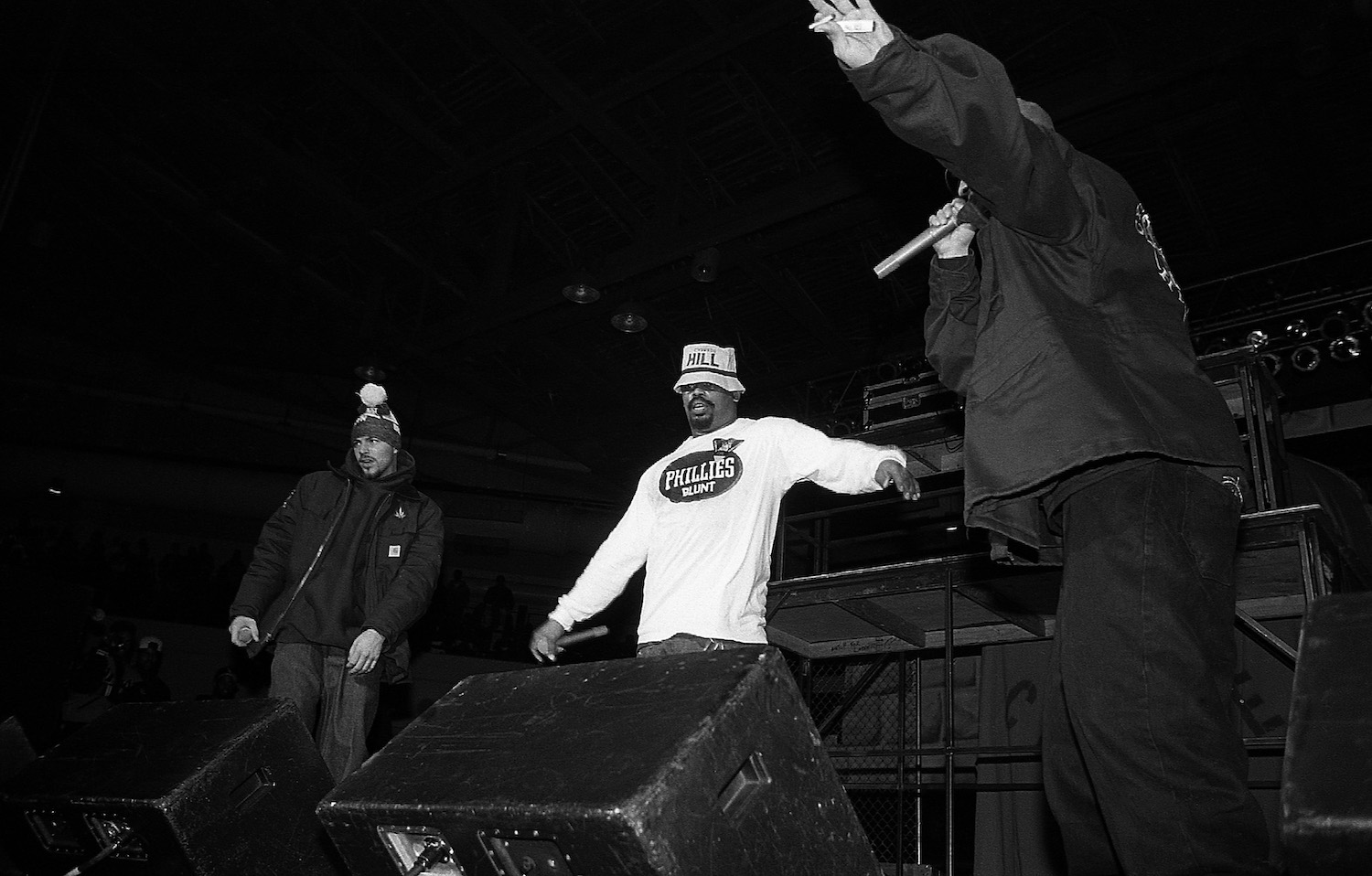
How did GFS end and what led you to start Subware?
When GFS ended, and that was our first company which was also called “Not From Concentrate,” I rolled right into Subware immediately. Like without skipping a season after the three of us decided we can no longer work together. The truth behind that is the Phillies Blunt T-shirt fucked it up. It didn’t matter how many other good projects we worked on. The Phillies Blunt T-shirt got knocked off by everybody and it was too overwhelming. It really messed with Gerb’s head since he was the managing business partner. It was like we had a good hit record and broke up, like a punk band.
After that I started Subware. I didn’t once talk about GFS or the Phillies Blunt. I launched Subware on its own. I didn’t even have to talk about my history. It was just: “Here’s a new brand focusing on what streetwear is to me.” I was educating and reaching audiences that hadn’t been reached with the artwork. Like even Brian (KAWS), I was the first person to produce KAWS’ work on clothing. I don’t run around telling everybody about it because I don’t need to exploit his great genius. It’s just part of the history. It gets told when it needs to be told and it’s there. I don’t fall back on other people. I do Stash work. When I work with other people, it’s in unison when we celebrate it. It’s not fair for one or the other to dominate the conversation about it. But it’s history and that’s where we came from.
This all occurred at the end of the subway graffiti era. Some writers went to hit clean trains while others bombed the streets. Why did writers like yourself and Futura transition into making clothing to state your name instead?
It wasn’t a matter of why, it was how, right? We just fell into it. Like anything else, you pioneer stuff by experimenting and putting yourself out there. Lenny had already been making T-shirts. Let’s be clear about that. Futura is the GOAT. The guy’s done everything. He sampled and dabbled in many things before we met. But I was the catalyst for the brand. I wasn’t the catalyst for the T-shirt Futura sold in Keith Haring’s Pop Shop. But I was more of the catalyst of: “Hey, let’s start a clothing brand. I think we can really do something here, a bit more than just a T-shirt.” We can make a lot of T-shirts, a few hats, some embroideries, and we just sort of learned it by default. There was no playbook.
Hiroshi Fujiwara said the Subware Training Pad was one of the first art product ideas to come from street art that he was really interested in. What was it like having a “viral” streetwear item back then and how is that different today?
I’ll start out by saying we didn’t have the internet back then. We didn’t have the luxury of sending a PDF. I had to get on an airplane. I had to learn French. I had to be a bit more hands-on and make cold calls. We did mail orders through UPS. Life before Amazon and the internet was nuts. It’s a completely different place, you know, but again, we were like chameleons. We adapted, we matured, and we watched this movement grow.
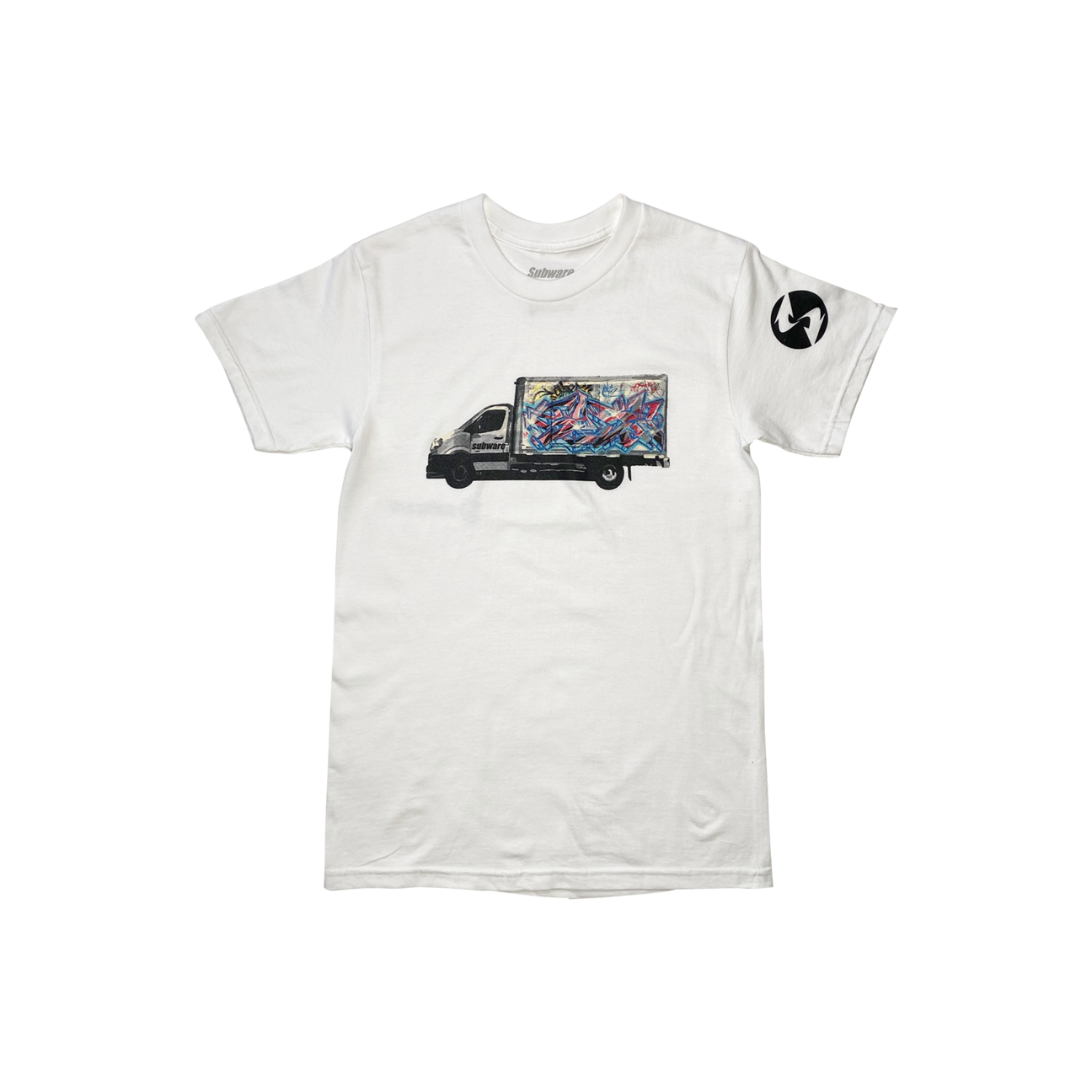
Going back to the Phillies Blunt T-shirt, there was like a trend for weed merchandise at the time right? Russell “SSUR” Karablin popped off because of that “Aweedas” T-shirt around the same time. How did you three convince Hav-A-Tampa, the company that owns Phillies Cigars, to license the logo to three random NYC graffiti artists? Was it hard to convince them?
We didn’t convince anybody. What happened was we gave T-shirts out and Ad-Rock of the Beastie Boys wore it on MTV. Hav-A-Tampa’s lawyer called CBS Records, they called the Beastie Boys’ management, and it went down to Mike D who was good friends with Gerb. Oh shit, we now have to get on a call with Hav-A-Tampa. Tobacco has not been allowed to be advertised or shown on TV since the late ‘60s, maybe early ‘70s. That was the craziest loophole nobody saw. We didn’t realize it or plan for it. We didn’t know. But that’s a tobacco product, Phillies Blunt. That’s the cigar brand and here you got dudes like Beastie Boys and their likes rocking it. And they were like: “Do you guys want to get a license?” I was like, “What is a license?”
We were learning by doing and we’re talking 1990. That’s what, 30 years ago now? What do we need a license for? So we got a license from Phillies Cigars. Whereas guys like Russ, just as creative, came up with Aweedas. He got sued by Adidas and they came down so hard on Russ that they sued Union, Triple Five Soul, Soho Skates, and any other shop in the city that sold his Aweedas T-shirt. Camella [Ehlke], James [Jebbia], Mary-Ann [Fusco], and everybody got fucked up over that T-shirt.
I love how you three said the Phillies Blunt T-shirt was like Warhol’s “Brillo Box.” It’s crazy how these collaborations with major companies aren’t weird to see today. I mean we live in the age where Supreme releases branded Oreos and Skittles. What do you think of stuff like that now? Is it also akin to Warhol’s “Brillo Box?”
I don’t, but I’m also not of the era. I came from a different place. I can understand the fascination and how it’s the modern iteration, right? That’s what these people are looking at all the time and it has that same relevance. Andy Warhol did it. You can’t redo it, you know what I’m saying? Like when’s the last time you did something for the first time, right? Dude did that. I can’t compare things like that. I get how people structure that, but I don’t look at it that way. You know what I mean? I’m curious to know why somebody would want to wear some Skittles branded-shit, even if it is Supreme. I get it, but I don’t understand what Skittles has to do with it. I was like, what the fuck is that? But again, who the fuck am I to say? That’s what we did back in the day with Phillies and everything else and people were like: “What the fuck is that?” Only in hindsight to be, “Oh, shit…”
Aside from the graphics, Subware had a great cut and sew program. I mean, between Subware and Recon, there were these great garments that seem reminiscent of “techwear” styles today. How did the early collaboration between Subware and Errolson Hugh’s Acronym come to fruition?
I was working at Burton Snowboards and so was Errolson. While I’m doing Subware, I’m also doing ghost graphics. I did the Analog logo for Burton and I did a bunch of stuff that’s still on their bags and luggage. You know, just graphic design work. A guy at Burton named Greg Dacyshyn who was the creative director of Burton, introduced me to Errolson. He said his friends were starting a brand and they were looking to get some graphics. Errolson and I met over a very early email and I did a bunch of early graphics for them—some of them are still in play today—and that’s how we met. He’s amazing. He was doing all the technical stuff on the Burton side, like the [ak] line, which is their high-end technical outerwear. Then he started Acronym.
I feel like Subware and Recon’s cut and sew was in that vein too. Was that designed by you or Futura?
No, Futura had nothing to do with Subware or Recon. He didn’t own it and he wasn’t a part of it. I did both brands and his contributions were graphic and otherwise. But we did all the layouts, we did all the cuts, and I had a staff of people that worked with me. Futura just contributed artistically. But just because of our partnership and the way everything is, it was under the whole “Stash and Futura” label. But he didn’t really own it or deal with the headaches of when it closed. Everything came and went but it’s all love.
How did you design Subware’s cut and sew apparel?
It’s not very hard when you break things down simply. You take a shirt that you like and lay it down flat. Take a photograph of it and you can pretty much trace the shirt. But then you say, wouldn’t it look nicer as a short sleeve? Wouldn’t it be nice if it didn’t have the buttons? So you start seeing things differently and learn a bit of the vernacular. I want a welt pocket, those are the pockets that go in and have a seam on it versus a zipper. And you start to say: Oh that’d be dope to put a pocket over there because nobody has a pocket over here. How would that work? You just start playing around and then you start getting stuff sampled.
Some of it sticks and that’s how I did it. I’m not a designer. I can’t drape fabric, but graphically shapes and design lends itself when you’re working with flats. And then if you have good factories and pattern makers that can translate that, you can push it along. But we’re all influenced and we all sample shop. I took my favorite jacket that I wore every day and thought about what I could change to make it my own. Maybe change the fabric, the collars, a different sleeve. It was little things like that and that’s how it started.
What apparel were you referencing at the time. Was it like military apparel?
Oh, it could be vintage military stuff. I could have an old ski jacket or really anything else at that point. And then just think about how I could flip it to make it uniquely Recon or Subware.
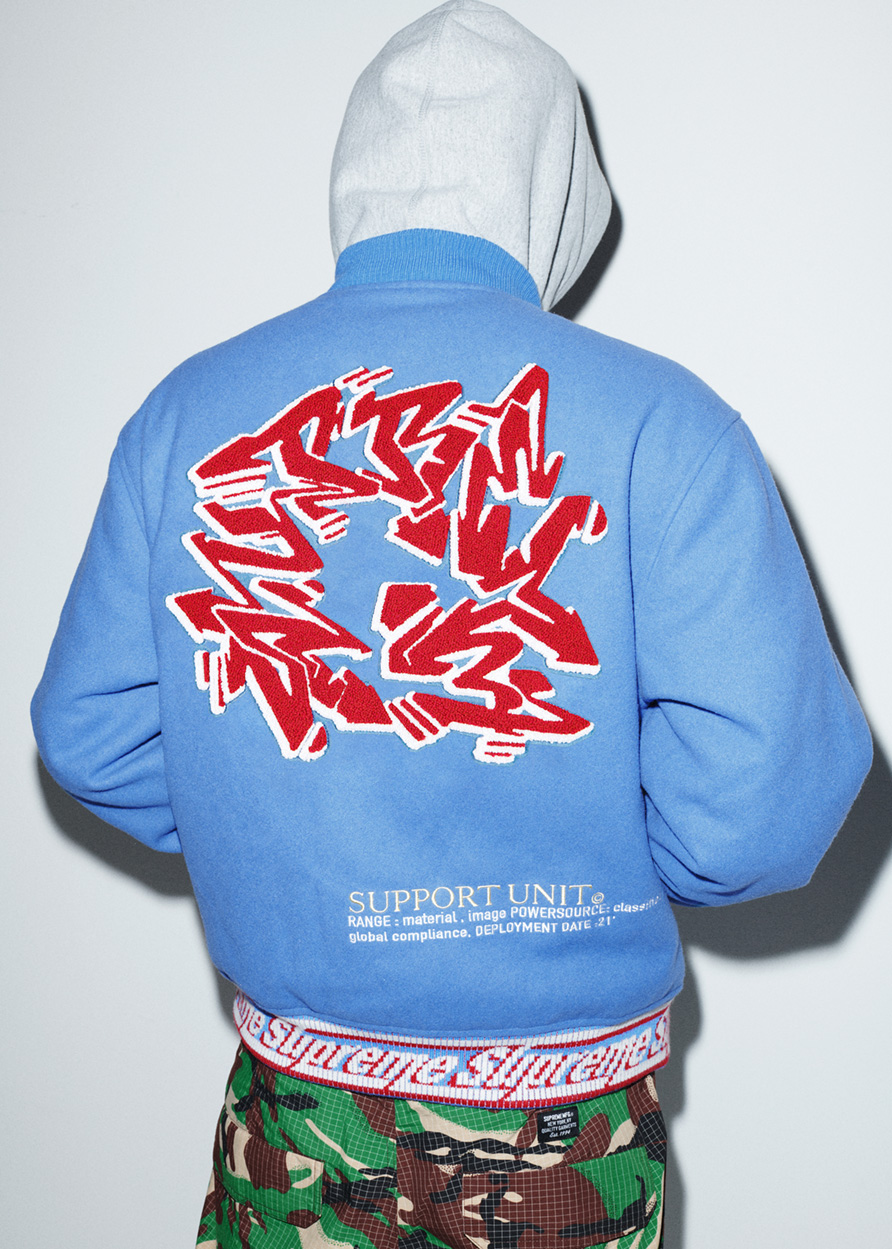
Speaking of those types of garments, I really did get that old-school Recon/Subware vibe from your Supreme collaboration this season. Can you tell me how the Supreme collab came together and how you came up with the design?
You know, that’s amazing you did because they sent me a brief with all my old work. I was so honored. I knew everybody at Supreme since before Supreme, right? We’ve all been friends and family for years yet I never did design work for them. And I never thought about it in a certain way. I’m always busy so I don’t really care. My son, about four months ago, he’s 16, he goes: “Yo, dad, would you ever rock for Supreme if they asked you?” And I just told him that I think that boat sailed because they’re working with younger, newer, contemporary people that are of the moment or whatever. Two days later, my boy West, who runs a lot of their special projects, hits me up and asks if I would be interested in working on some pieces.
They sent me some of my work that they were influenced by. I guess the designers that create Supreme now are really nostalgic because they referenced my early design work and rebranded it for Supreme. And I feel really good about that. They’re a really good crew to work with and everything was amazing as you hope it would be. I wish I had two more hands so I can give them four thumbs up.
Do you envision producing garments like that for Subware in the future?
I mean, listen, the future is unwritten as they say, right? If I can quote our boy Mr. Strummer. I don’t know because I’m not even thinking about that right now. Graphically, T-shirts and soft goods are easy counter purchases. There’s such intensity in the industry. There’s a lot of high-end stuff that I don’t know if I can keep in stride and make something like that in this conversation anyway. Like I don’t know where we’re going in that regard. But graphically, we have a lot of cool things lined up and we’re going to have fun reintroducing artists and doing what we do as well as our own take on our world.
It’s just crazy to hear you talk about how Subware was one of the first brands to pioneer this concept of artist collaborations, especially within the realm of graffiti and street art.
Well, let’s not discount the whole West Coast crew. Because, you know, right around the time of Subware, brands like Tribal Gear worked with a lot of artists and bigged them up. I just came from a different ilk. I was about that New York old school. The people I was blessed to work with through Subware, Phase 2, rest in peace, people like that. So historically, I think I was able to bring some things to the surface that hadn’t come up yet. I credit a lot of other brands during the same time who were working with local artists, but it wasn’t in the same way. I was doing it ‘cause I was designing my brand and always, every season, having an artist collaboration.
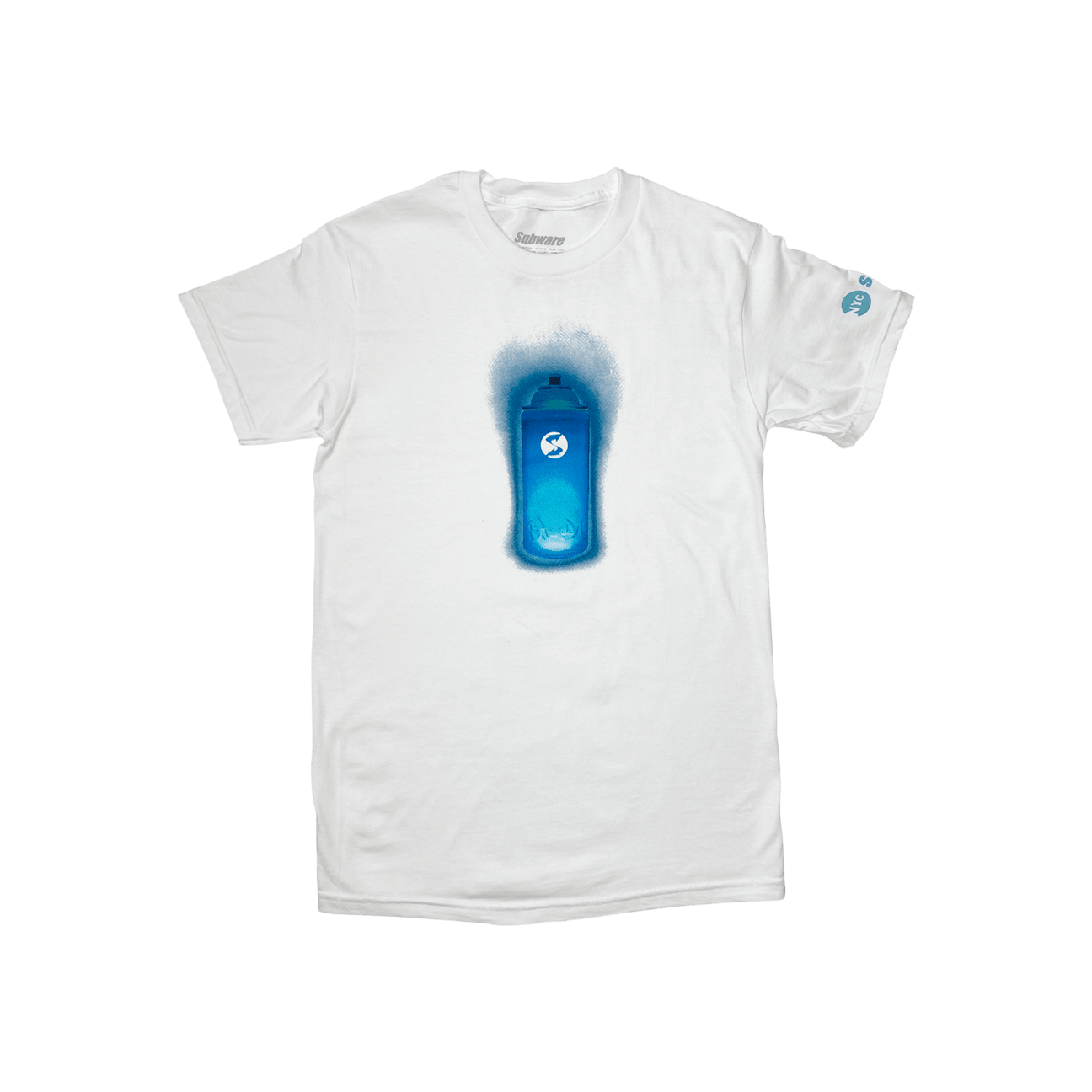
Nowadays, it feels like graffiti is being respected within high fashion as seen with collaborations between artists like Futura and Louis Vuitton. Do you feel like the graffiti artists who helped set the foundation for streetwear, like yourself or someone like Isaac “West” Rubinstein of PNB Nation, really get the proper credit and recognition that’s due?
It depends on what conversation you’re having. I mean you do and you don’t. Where is it going to be written forever? I don’t know. I feel celebrated when I’m in the community and those who know, know. We’re powerful motherfuckers who don’t have to say much. You might not like the history, but you can’t change it. I mean, we’re happy to have the conversation. We just might not instigate it.
So aside from fresh drops from Subware, what should heads be looking forward to from Stash in the near future?
There’s a whole lot of stuff coming up and really cool stuff I have to say. So just stay with me on this. I don’t want to start dropping, bouncing, and doing. But I can assure you that if you like the trajectory that we’ve been on already, it’s only going to intensify. And thank you all by the way, who are fans of Subware and Stash. There’s going to be some treats coming up in the next few months that I’m really excited about.

